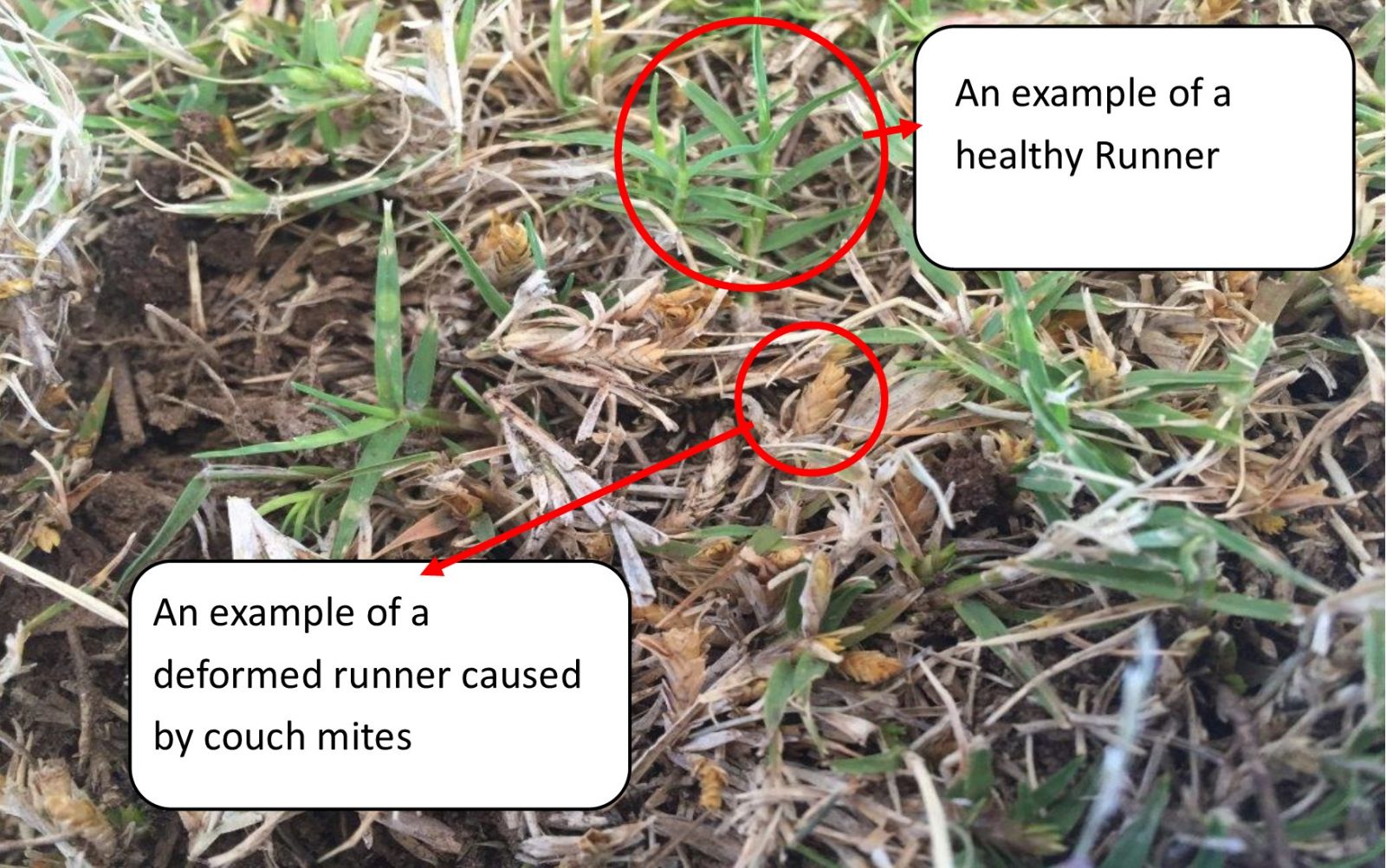Turf Mites
Author: Stefan Palm Date Posted: 20 November 2023
Is your lawn lifeless and patchy? Have you found that it doesn't respond no matter how much water, fertilisers and beetle bombs you throw at it? You might find that turf mites have moved in and are literally sucking the life out of your lawn.
Each year, turf mites become more and more prevalent in domestic lawns, and this year is no different. Already, we have seen dozens of cases as lawns come out of their winter dormancy. Turf mites are microscopic organisms that come from the arachnid class (the same class as spiders and scorpions). They breed quickly, have a short life span and occur in their millions. Mite damage is most common in couch and kikuyu lawns and can affect your lawn in a number of ways.
The first noticeable damage often occurs in Spring when the lawn fails to thrive as it normally would when the temperatures increase in spite of plenty of water and fertiliser. Mites sit at the base of the blades of grass where they attach to the runner and suck the life from it. As a result, they prevent the growth of healthy blades, which means your grass won't grow, won't recover from damage and won't look very good. The turf noticeably loses its colour in patches and takes on what’s called a “witches broom” effect (see the photo below where you can see the yellow stunted shoots of lawn that resemble witches' brooms). Put simply, your lawn fails to thrive no matter what you do. For those who are technically minded, “mites cause a shortening of the internodes and the apparent stimulation of abnormally excessive plant growth. The mites remain hidden under the leaf sheaths and vary in number from a few to a hundred or more under a single sheath. With heavy infestations, the grass will turn brown and die.” Eventually, the grass thins out, leaving the lawn susceptible to weed and disease attacks.

Conditions that favour mites are dry, warm weather during spring & summer.
Control measures:
So…. “How do I control Turf Mites?” I hear you say. One of the best ways is to create an environment that they don’t like. This includes:
- Make sure your grass is adequately fertilised (ideally three times per year)
- Make sure your grass is adequately watered
- Make sure you don’t leave clippings on your lawn where mites are a problem
If you are doing all this and still manage to get an outbreak, then chemical control is your only option. Turf mites will never go away by themselves, and left untreated, the problem will only get worse. Off-the-shelf chemicals from your hardware store that contain pyrethroids, diazinon or oils will not control turf mites. The only solution is to spray with a combination of products such as Thumper, Malice Duo and Waldo.
Treatment will include several spray treatments that target all of the life cycles of the mite, including eggs, nymphs and adults. This requires several different chemicals, namely those mentioned above. We have found that simply using one chemical doesn't solve the problem and leads to resistant populations that are hard to control.
You can buy these chemicals and apply them yourself; however, they are expensive and must be applied according to a very specific regime. With this in mind, and to make mite control affordable, we can put you in contact with contractors who can spray your lawn for you.
If you think you have a turf mite problem or any other problem resulting in your lawn dying, contact us at 8298 0555 or email us at info@paulmunnsinstantlawn.com.au. Alternatively, cut out a core sample from your lawn and bring it down to our store at Hove. We're always happy to help you sort things out.
